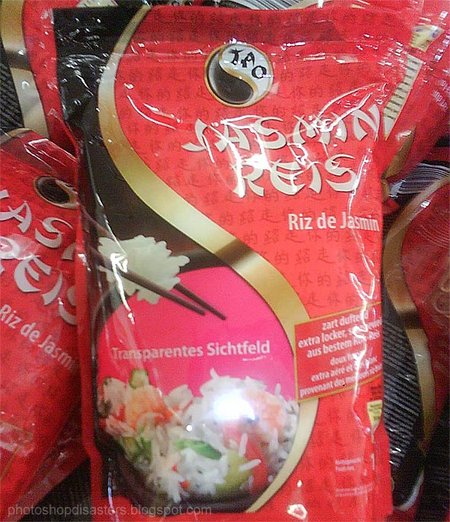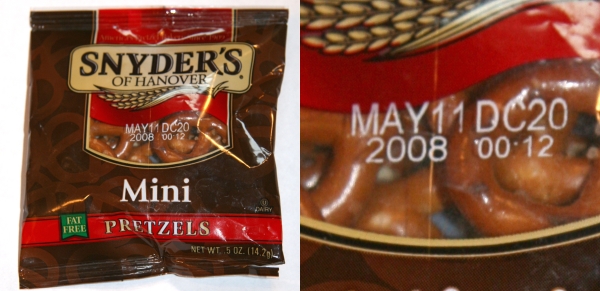I caught this revealing error on the always entertaining Photoshop Disasters and thought it was too good to resist pointing out here:
The picture, of course, is a bag of Tao brand jasmine rice for sale in Germany. The error is pretty obvious if you understand a little German: the phrase transparentes sichtfeld literally means transparent field of view. In this case, the phrase is a note written by the graphic designer of the rice bag’s packaging that was never meant to be read by a consumer. The phrase is supposed to indicate to someone involved in the bag’s manufacture than the pink background on which the text is written is supposed to remain unprinted (i.e., as transparent plastic) so that customers get a view directly onto the rice inside the bag.
The error, of course, is that the the pink background and the text was never removed. This was possible, in part, because the the pink background doesn’t look horribly out of place on the bag. A more important factor, however, is the fact that the person printing the bag and bagging the rice almost certainly didn’t speak German.
In this sense, this bears a lot of similarity with some errors I’ve written up before — e.g., the Welsh autoresponder and the Translate server error restaurant. And as in those cases, there are takeaways here about all the things we take for granted when communicating using technology — things we often don’t realize until language barriers make errors like this thrust hidden processes into view.
This error revealed a bit of the processes through which these bags of rice are produced and a little bit about the people and the division of labor that helped bring it to us. Ironically, this error is revealing precisely through the way that the bag fails to reveal its contents.

